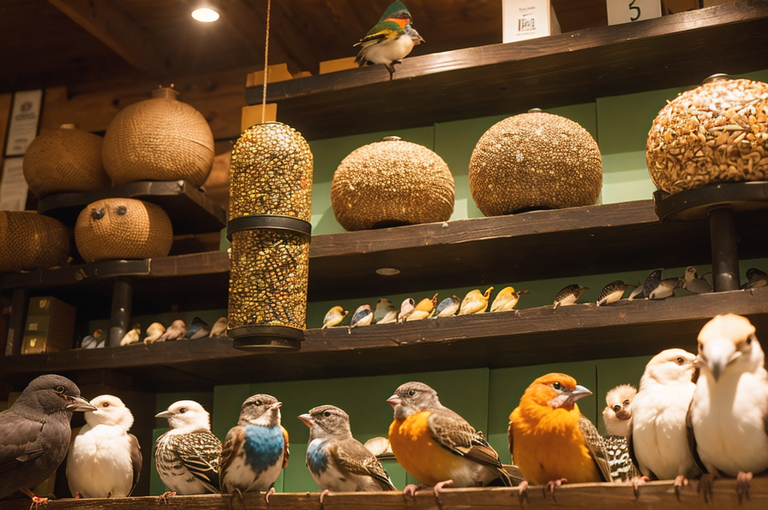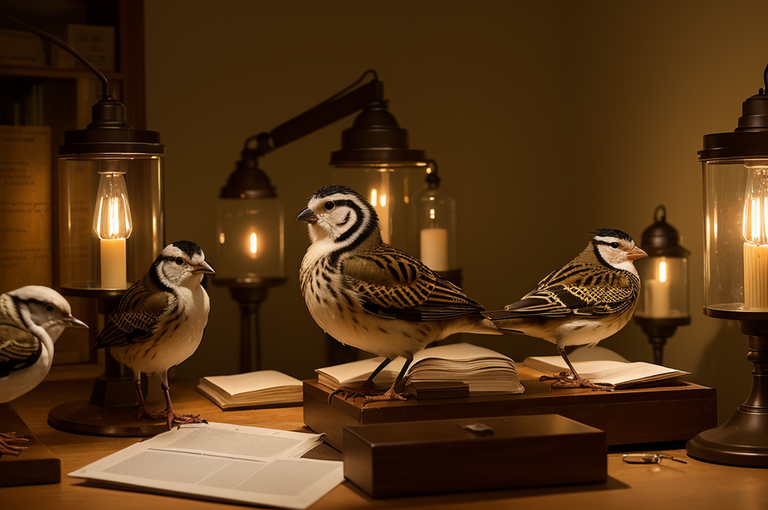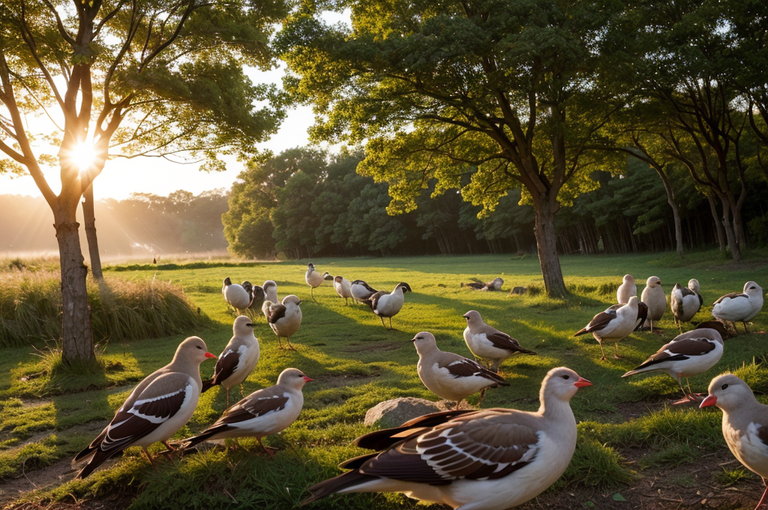The Risks of Releasing Pet Birds into the Wild and Safer Alternatives

The World Parrot Trust discourages releasing pet birds in the wild due to health risks. Instead, it recommends adoption or placement in sanctuaries. It also provides steps to earn wild bird’s trust.
Misconceptions and Risks of Pet Bird Release
Oh, the freedom a bird must feel, soaring high above, unrestrained! A common sentiment indeed, yet often leading to misconceptions of well being when it comes to releasing pet birds. Many assume that because birds are creatures of flight, they will naturally adapt to life in the wild. But this isn’t always the case. As a matter of fact, the World Parrot Trust discourages such practices due to an abundance of risks and potential negative impacts.
Common Misconceptions about Bird Release
These birds, less like their wild counterparts than one might realize, are ill equipped to handle threats that come naturally in the wild such as starvation, predation, poaching, and severe weather conditions. It’s a romantic notion that a domestic bird might happily find existence in the outside world, but, in reality, it’s a world to which they’re foreign. So, can cockatiels eat wild bird seed, as many would assume? Well, perhaps, but it’s only a small part of the table of survival, which includes coping with nature’s fierce and unyielding adversities.
Risks Associated with Pet Bird Release
One of the lesser known risks, yet perhaps the most alarming of all, is the danger posed to wild bird populations through disease transmission from released pets. It would be naive to think that a creature accustomed to a domestic environment, without the immunity born of natural survival, wouldn’t potentially introduce health risks into an unprepared wild population.
Impact on Wildlife and Bird Populations
It’s with a fond heart that we oftentimes view our feathered friends as being happier in the wild. However, the unfortunate truth is that releasing pets can do more harm than good, giving rise to threats to the wildlife which we long to protect. So dear friends, we must remind ourselves to approach with care and discernment when considering the welfare of our avian companions and their wild brethren after all, the sky isn’t always as friendly as it seems!

Well-Managed Programs for Bird Release
Like a wild bird flapping wings but not flying, a captive bird also needs the right environment and conditions before it can soar again into the wild. This is where well managed programs for bird release come in. Essentially, these programs work to provide birds with an atmosphere replicating their natural habitat and preparing them for a life beyond the confines of captivity. 🌳🦜
Requirements for Successful Bird Release
To ensure the most advantageous outcome, certain requirements must be closely observed. Foremost in mind is the bird’s health status. 🏥💛 Checking and treating any ailments or injuries are crucial before reintroducing them back to the wild.
Another crucial factor for a successful release is the release site. The place has to mimic the bird’s natural environment and provide the necessary food and shelter. Any variance could lead to stress, potentially impinging their survival chances in the wild.
Benefits of Well-Managed Release Programs
Well managed release programs not only free birds from captivity but they also have far reaching benefits to the broader ecosystem. They can help restore biodiversity, provide opportunities for learning and research, and inspire communal appreciation for avian life. Furthermore, by providing post release monitoring, the programs ensure the birds’ survival and adaptability.🍃🌏
Survival Chances for Birds Prepared for Wild
Finally, the question many of us silently hold in our hearts what are the survival chances for birds prepared for the wild? Much like the magical mystery of bird migration, there’s no precise answer to this question. Birds hatched in the wild or bred in captivity, and later prepared for the wild have generally shown better chances of survival. However, the ultimate success always remains protected in the gentle hands of nature and the intricacies of its workings. 🌿🌍
Well managed bird release programs, thriving off rigorous structure and methodology, strive to gift each feathered friend a chance at freedom, much like a bird flapping wings, anticipating flight.🕊️🗺️

Recommendations For Unable Caretakers
Stumbling upon a realization that I can no longer care for my avian companion is tough. Like spotting a group of wild yellow birds disappearing over the horizon, it carries a pungent sense of finality. But, remember every sunset is followed by a dawn of new possibilities.
Adoption as an Alternative
The World Parrot Trust, with its infinite wisdom, suggests adoption as an amicable solution for those unable to extend the necessary care. It resonates in my mind, an echo of my own father’s words on the importance of shared responsibilities and nurturing compassion. Offering an extension of love and care to these aquiline companions through the medium of adoption paints a better world for them, one we’ve often dreamt of together.
Placement in Bird Sanctuaries or Zoological Institutes
The underbelly of a morning cloud, the jingle of wind chimes, and turing our feathered friends over to a sanctuary or reputable zoological institute. They are alternatives, not unlike the second verse of a morning lark’s song, there to provide additional solace. These establishments, with their intricate infrastructure and skilled caregivers, can bestow an environment more harmonious than what can be observed even among the wild yellow birds that nest outside my humble abode.
Help from Bird Welfare Organizations
The quiet orchestrators of the avian world, bird welfare organizations, are much like a symphony eliciting the sonorous harmony of the avian world in our human one. Their resources and guidance can furnish the much needed relief for those unable to stretch their wing to provide care. Their expertise can serve as the beacon of light necessary to walk down this woeful path, with an estranged heart but undoubtedly, in the right direction.
Remember, dear reader, that while the twilight may seem long, it is never ceaseless. The constellations always give way to a new dawn, a reprieve for the lonesome and the weary. And in that dawn, a fresh start for our feathered companions, unable to find solace in the present.

Building Trust with Wild Birds
A yellow wild bird added a splash of color in my backyard today, and the sighting brought to mind the marvel of forging connections with such wonderful creatures. Gaining their trust isn’t as mystical as it sounds, though it does require a careful approach.
Steps Towards Gaining Bird Trust
Firstly, establishing feeders can serve as a bird’s introduction to your space, but consistent nourishment is the key. A bird, much like any other creature, recognizes patterns and associates them with safety. Just like a reliable sunrise, become a predictable presence in their lives with food and patience.
Importance of Consistency and Patience
It’s imperative, however, to be mindful of your movements. The world is rife with dangers for a bird, and sudden gestures can trigger their flight instinct. Conduct yourself with grace and slow movements when in their presence. This demonstration of respect can help foster trust and leave them feeling less alarmed.
Encouraging Healthy Bird-Human Interactions
Interactions should always prioritize the bird’s comfort. Consider yourselves visitors in their world. Make your approach as nonthreatening as possible whilst also providing space for them to retreat if desired. After all, the best human bird relationships blossom from respect and understanding.
Four keys—providing food, consistency, patience, and respect—contribute to a bond with our avian companions. So, continue to build those bridges, sending echoes of understanding into the wild. Let’s all strive to be a friend to birds, considering this connection a privilege and not a right.
Key Takeaways
In the quiet early morning hours, the hushed twitter of yellow wild birds serves as a poignant reminder of the important role we play as bird owners. Channeling an innate love for these creatures into responsible stewardship is not only a reflection of our humanity, but an investment in their survival. Handed the privilege of caring for these delicate lives, can cockatiels eat wild bird seed and thrive? Yes, as long as we make the effort to understand their needs.
Importance of Responsible Pet Bird Ownership
The nuances of bird ownership are much like the graceful flight of a wild bird flapping wings but not flitting away – complex, requiring understanding. Encompassing more than providing the right diet and adequate cage space, it demands an unflinching commitment that extends to the quality of their life and survival beyond our homes. What if the day arrives when we can no longer care for these feathered companions? As we unfold this question, we stumble upon an alternative path—adoption or institutional placement.
Risks and Consequences of Irresponsible Bird Release
Brushing aside the convenient solution of releasing them into the wild, we peer deeper and find in its wake a trail of risks and consequences. Without the necessary instincts and skills to survive, our beloved pets become an easy meal for predators. Alternatively, their very survival can tip the delicate balance of the local ecosystem. It’s a stark reminder of how actions springing from ignorance or indifference, more likely than not, end up causing harm.
Building Healthy Relationships with Birds
In contrast, imagine instead cultivating a rich, trusting bond with these beautiful beings—like savoring the sight of a wild yellow bird shyly peeking from behind leaves. How much more rewarding than an irresponsible dismissal of our duties! This bond, nurtured with patience and understanding, could embolden our sense of appreciation for the avian world. An enriching approach to sharing life – for us, and for the birds under our care.
In these three key takeaways, we distill the essence of responsible, loving bird ownership—an ongoing journey filled with discovery, reverence, and fulfilment. We owe it to these charming winged creatures, to ourselves, and ultimately, to the delicate balance of the natural world.


